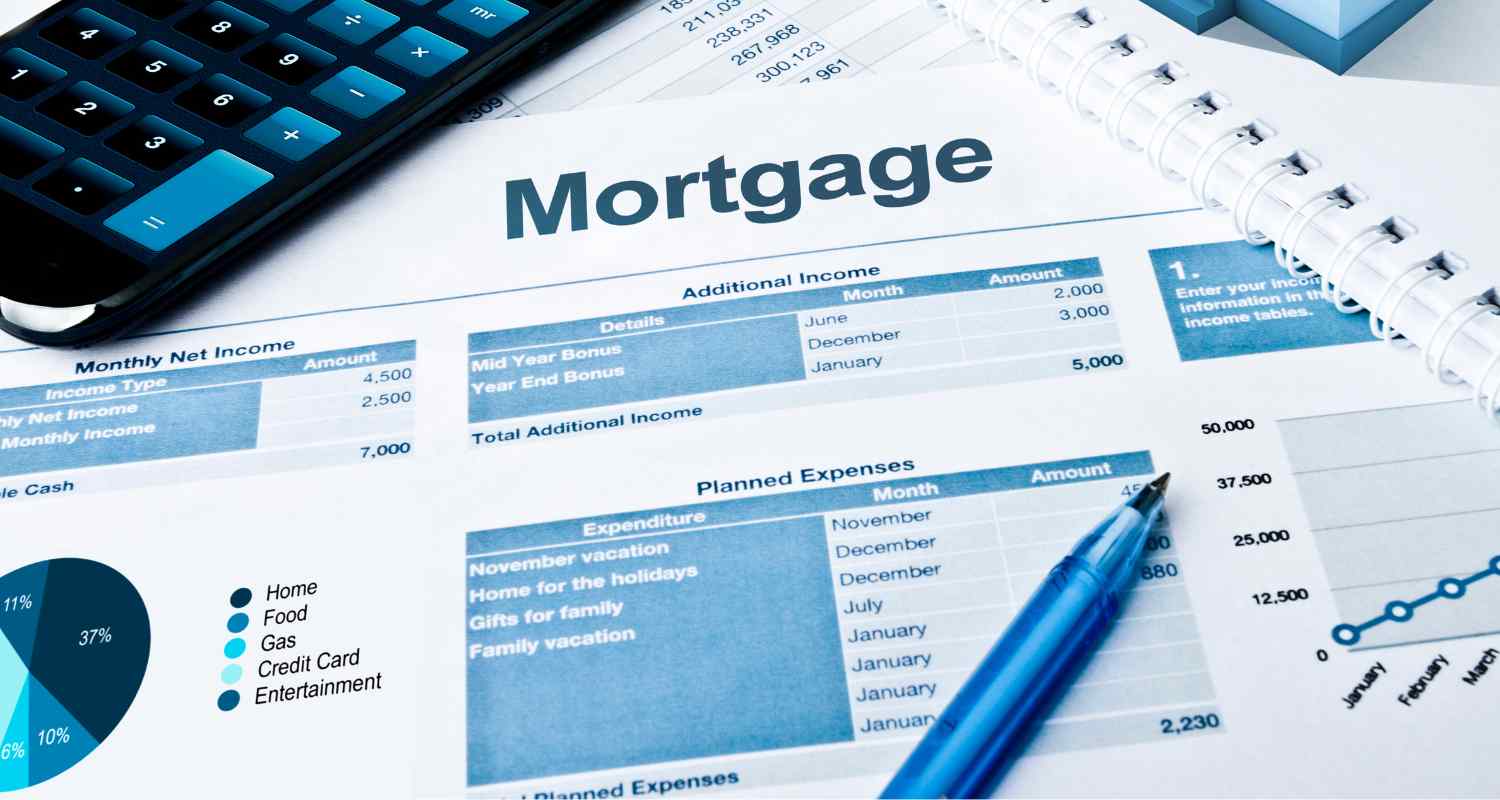Getting a Loan for Real Estate Investment: Complete 2025 Dubai Guide
Financing determines investment scale and portfolio growth velocity. Cash-only purchases limit opportunities, while strategic leverage amplifies returns and accelerates wealth building. Dubai's mortgage market offers 75-80% loan-to-value ratios for residents and 50-75% for international investors, creating accessible entry points into a market delivering 6-8% rental yields. Understanding qualification requirements, documentation processes, and lender expectations separates successful applicants from rejected ones.
Quick answer: 6 steps to secure your investment property loan
- Verify minimum requirements: Confirm AED 15,000+ monthly income, 25% down payment availability, and 6-month banking history documentation
- Obtain mortgage pre-approval: Submit income proof, bank statements, and identification to 2-3 banks for rate comparison and borrowing capacity
- Calculate debt-to-income ratio: Ensure existing debts plus new mortgage payment stay below 50% of gross monthly income
- Prepare down payment funds: Secure 25-40% of property value plus 5-7% closing costs in liquid, verifiable accounts
- Select property meeting lender criteria: Choose properties in approved developments with clear title and DLD registration compliance
- Complete valuation and final approval: Bank-appointed valuers assess property, leading to formal mortgage offer within 7-14 days
Expect 3-6 weeks from pre-approval to fund disbursement for Dubai investment properties. Process details below.
Investment Property Loans Explained: What Makes Them Different?

Investment property financing carries distinct characteristics separating it from primary residence mortgages. Lenders apply different risk assessments, pricing structures, and qualification standards.
Investment vs Owner-Occupied Mortgage Requirements
Investment property loans demand higher down payments, stricter income verification, and larger cash reserves compared to owner-occupied mortgages. Dubai banks require 25-40% down payments for investment properties versus 15-25% for primary residences. Non-resident investors face 40-50% down payment requirements in most cases.
Interest rates typically run 0.25-0.75% higher for investment properties reflecting elevated risk profiles. A primary residence mortgage at 3.99% becomes 4.49-4.74% for equivalent investment property financing. Over 20-year terms, this differential adds substantial cost.
Qualification income thresholds increase for investment properties. While primary residence mortgages accept AED 10,000-12,000 monthly income minimums, investment property loans require AED 15,000-20,000 depending on property value and lender policies. Banks scrutinize income stability more intensely, preferring salaried employees over commission-based or variable income sources.
Documentation requirements expand significantly. Investment property applications require comprehensive financial histories, existing asset portfolios, and detailed income verification beyond standard salary certificates.
Why Lenders View Investment Properties as Higher Risk?

Default rates on investment properties exceed owner-occupied properties across all markets. Borrowers prioritize protecting primary residences during financial stress, making investment properties first candidates for strategic default. Dubai banks acknowledge this behavioral pattern through risk-adjusted pricing.
Rental income volatility creates uncertainty in borrower cash flow projections. Vacancy periods, tenant defaults, and maintenance expenses impact debt service capacity. Even when properties generate positive cash flow at purchase, market shifts can eliminate margins quickly.
Property values in investment-heavy communities experience greater price volatility during market corrections. Areas with 70-80% investor ownership see faster value declines than owner-occupied neighborhoods during downturns, threatening lender collateral positions.
Banks cannot rely on rental income for qualification purposes in most Dubai mortgage structures. Lenders underwrite based solely on borrower employment income, ignoring projected rental returns regardless of demonstrated market rental yields. This conservative approach protects banks but requires borrowers to qualify without investment property income credits.
Dubai Mortgage Requirements for Investment Properties in 2025

Specific qualification criteria govern investment property financing across Dubai's banking sector. Understanding these requirements enables realistic planning and application preparation.
Down Payment and LTV Ratios for Expats vs Non-Residents
UAE residents (Emirates ID holders) access maximum 75% LTV on investment properties valued under AED 5 million. Properties exceeding AED 5 million drop to 65-70% LTV depending on bank policies. This translates to 25-30% minimum down payments plus closing costs.
Non-resident investors face stricter LTV caps at 50-60% for investment properties. Some international banks operating in Dubai offer 65% LTV for non-residents with substantial global asset portfolios or existing relationships. Effective down payment requirements reach 40-50% of purchase price.
Property value tiers impact available leverage:
- Properties under AED 1 million: 75% LTV maximum (residents)
- AED 1-5 million: 75% LTV (residents), 60% LTV (non-residents)
- Above AED 5 million: 65-70% LTV (residents), 50-60% LTV (non-residents)
- Commercial properties: 50-60% LTV all categories
Calculate exact capital requirements for your target property using our investment budgeting guide. Down payment funds must demonstrate legitimate sources through bank statements spanning 6+ months. Recent large deposits trigger additional scrutiny requiring gift letters or income documentation.
Closing cost allocation requires separate funds beyond down payment:
- Dubai Land Department registration: 4% of property value
- Mortgage registration fee: 0.25% of loan amount plus AED 290
- Property valuation: AED 2,500-3,500
- Bank processing fees: 1% of loan amount
- Conveyancing and legal fees: AED 5,000-10,000
Total closing costs typically reach 5-7% of property value, requiring separate liquid funds beyond down payment reserves.
Credit Score, Income, and Documentation Requirements

Dubai banks don't use traditional credit scores like Western markets, but Al Etihad Credit Bureau (AECB) reports determine approval likelihood. Clean AECB reports with no defaults, late payments, or high utilization ratios (below 40% on existing credit facilities) receive preferential treatment.
Minimum income thresholds vary by bank and property value:
- Properties under AED 1 million: AED 15,000 monthly minimum
- AED 1-2 million: AED 20,000-25,000 monthly
- Above AED 2 million: AED 30,000+ monthly
- Income must be salary-based and verifiable through bank transfers
Debt-to-income (DTI) ratios cannot exceed 50% of gross monthly income including new mortgage payment. Calculate by adding all existing loan payments plus proposed mortgage payment, dividing by gross monthly income. A borrower earning AED 25,000 with AED 5,000 existing debt can support maximum AED 7,500 additional mortgage payment.
Required documentation checklist:
- Valid passport and UAE residence visa (residents)
- Emirates ID both sides (residents)
- Last 6 months bank statements showing salary credits
- Salary certificate stating basic salary, allowances, and tenure
- Employment contract or offer letter
- Last 3 months payslips
- AECB credit report consent form
- Property purchase documents (sale agreement, NOC)
- Existing property ownership documents if applicable
Self-employed investors face additional scrutiny requiring 2-3 years audited financial statements, trade license copies, and company bank statements. Some banks decline self-employed applications entirely, while others offer reduced LTV ratios.
Types of Investment Property Loans Available

Multiple financing structures serve different investor profiles and property types. Understanding options enables optimal selection for specific circumstances.
Conventional Bank Mortgages: The Standard Option
Fixed-rate mortgages lock interest rates for initial 1-5 year periods before converting to variable rates. Dubai banks offer fixed rates at 3.99-4.99% depending on down payment size, income profile, and relationship banking status. Fixed periods provide payment certainty during early ownership years.
Variable-rate mortgages adjust quarterly based on UAE Central Bank rates plus bank margin (typically 1.5-2.5%). Variable rates currently range 4.25-5.25% and carry risk of payment increases during rate hiking cycles but offer lower initial rates than fixed alternatives.
Reducing balance calculation applies to all Dubai mortgages, meaning interest charges decline as principal reduces. This differs from flat-rate calculations found in some markets, creating true amortization schedules where later payments apply increasingly to principal reduction.
Major lenders for investment properties:
- Emirates NBD: Competitive rates, streamlined digital processing
- Dubai Islamic Bank: Sharia-compliant structures, good non-resident programs
- Mashreq Bank: Flexible terms, relationship-based pricing
- RAKBANK: Aggressive rates for high-income borrowers
- ADCB: Strong expatriate programs, multiple property financing
Application processing spans 3-6 weeks from initial submission to fund disbursement. Pre-approval certificates obtained within 5-7 business days provide negotiating leverage and purchase timeline certainty. Understand the complete investment process in our comprehensive Dubai real estate guide.
Alternative Financing: Private Lenders and Developer Plans
Developer payment plans eliminate traditional mortgage requirements for off-plan properties. Typical structures require 20% down payment with remaining 80% split across construction milestones over 24-48 months. Final payment at handover can be financed through conventional mortgages with improved LTV ratios since property value typically appreciates during construction.
Private money lenders operate outside traditional banking regulations, offering faster approvals and flexible qualification standards. Interest rates range 7-12% annually with shorter loan terms (1-5 years) and balloon payment structures. Private financing suits borrowers with credit challenges, complex income structures, or requiring rapid closing timelines.
Portfolio loans from relationship banks accommodate investors with multiple properties. After establishing track records with 2-3 financed properties, banks offer streamlined approvals for additional acquisitions based on overall portfolio performance rather than individual property underwriting. Portfolio lending unlocks scaling velocity for serious investors.
Equity release mortgages tap existing property equity for new purchase down payments. Borrowers with substantial equity in primary residences or prior investment properties refinance or establish home equity lines funding additional acquisitions. This strategy accelerates portfolio growth without requiring new capital injection.
Explore creative acquisition strategies requiring minimal upfront capital through our low-money investment guide. Alternative financing carries higher costs but provides access when conventional options prove unavailable or insufficient.
Step-by-Step Process to Secure Your Investment Loan
.jpg)
Systematic execution reduces approval timelines and maximizes favorable term negotiations. Following structured processes prevents common pitfalls delaying or derailing applications.
Pre-Approval and Financial Preparation
Step 1: Financial assessment and cleanup (2-4 weeks before applications)
Review AECB credit report identifying any negative marks requiring resolution. Pay down high-utilization credit cards below 30% of limits. Consolidate scattered savings into primary accounts demonstrating 6-month consistent balances. Avoid large unexplained deposits or withdrawals during this period.
Step 2: Documentation assembly (1-2 weeks)
Gather complete documentation packages for simultaneous submission to multiple banks. Request updated salary certificates from HR departments, compile 6-month bank statement PDFs, scan passport/visa/Emirates ID pages, and organize existing property ownership documents if applicable.
Step 3: Pre-approval submissions (1 week)
Submit pre-approval applications to 3-5 banks simultaneously comparing rates, terms, and processing efficiency. Pre-approvals remain valid 60-90 days providing ample property search timeframes. Banks issue pre-approval certificates stating maximum loan amounts, indicative rates, and documentation requirements for final approval.
Step 4: Budget finalization
Use pre-approval loan amounts calculating affordable property price ranges including down payment and closing cost requirements. Factor monthly payment obligations confirming comfortable coverage within income after existing debts and living expenses.
Property Selection and Final Mortgage Approval
.jpg)
Step 5: Property identification and offer
Select properties meeting bank lending criteria in approved developments with clear title chains. Avoid properties with pending disputes, unclear ownership, or non-DLD registered status. Research high-performing communities and specific developments in our location investment guide.
Submit purchase offers including mortgage financing contingency clauses protecting deposits if loan approval fails. Standard purchase agreements allow 30-45 days for mortgage approval completion.
Step 6: Formal mortgage application
Submit complete documentation packages to selected lender along with signed purchase agreement and property details. Banks order third-party valuations (AED 2,500-3,500) confirming property values support requested loan amounts.
Step 7: Bank valuation and underwriting (7-14 days)
Bank-appointed valuers inspect properties issuing reports within 3-5 business days. Underwriting teams review complete files making formal approval decisions within 7-10 additional business days. Approvals include final interest rates, loan amounts, and disbursement conditions.
Step 8: Mortgage offer acceptance and disbursement (3-7 days)
Review formal mortgage offers confirming terms match expectations. Sign acceptance documents and complete any remaining conditions (additional documentation, life insurance policies). Banks disburse funds directly to seller accounts or developer escrow accounts upon final signature and DLD transfer completion.
Step 9: Property registration
Complete DLD property transfer with all parties present. Mortgages register simultaneously with property title transfers. Receive title deed showing property ownership and registered mortgage. Transaction completes with key handover for ready properties or according to construction schedule for off-plan purchases.
Strategies to Maximize Loan Approval and Terms
Sophisticated applicants employ specific techniques improving approval likelihood and negotiating superior terms compared to standard offerings.
Building Strong Relationships with Dubai Banks
.jpg)
Relationship banking unlocks preferential pricing and streamlined processing. Transfer primary salary deposits to target mortgage banks 6-12 months before applications. Maintain savings account balances exceeding AED 50,000. Utilize credit cards, wealth management services, or business banking products establishing multi-product relationships.
Negotiation leverage points:
- Comparison quotes from competing banks drive rate matching
- Large down payments (35-40%) justify rate discounts of 0.25-0.50%
- High income levels relative to property values reduce perceived risk
- Existing property portfolios with clean payment histories demonstrate capability
- Professional designations (doctors, engineers, senior executives) receive preferential treatment
Request formal mortgage offers from multiple banks simultaneously creating competitive tension. Present lower competing offers requesting rate matches or fee reductions. Banks demonstrate surprising flexibility when losing deals to competitors, especially for high-quality borrowers.
Leveraging Existing Property Equity
.jpg)
Equity extraction strategies fund new investment down payments without fresh capital:
Cash-out refinancing replaces existing mortgages with larger loans returning difference in cash. Borrowers with properties purchased 3-5 years ago often have substantial equity from appreciation and principal reduction. Refinance accessing this equity for redeployment into additional acquisitions.
Home equity lines of credit (HELOC) provide revolving credit facilities secured against property equity. Draw funds as needed for down payments, renovations, or holding cost coverage. HELOC rates typically run 1-2% above standard mortgage rates but offer maximum flexibility.
Cross-collateralization pledges multiple properties as security for single loans, increasing total available financing beyond individual property LTV limits. Sophisticated investors with 3+ properties structure portfolio-wide financing arrangements maximizing leverage across entire holdings.
Sequential acquisition model uses appreciation on Property 1 funding Property 2 down payment, then Properties 1-2 appreciation funding Property 3, creating compounding portfolio growth. This strategy requires strong initial equity positions and healthy markets maintaining appreciation momentum.
Equity-based strategies carry risks of over-leverage creating vulnerability during market corrections. Maintain 20-30% aggregate equity across portfolios providing cushion against temporary value declines.
Conclusion
Getting a loan for real estate investment in Dubai requires understanding specific requirements, preparing comprehensive documentation, and executing systematic application processes. Key success factors separate approved applications from rejected ones.
Critical elements include:
- Meeting 25-40% down payment thresholds plus 5-7% closing costs
- Demonstrating AED 15,000+ monthly income through verifiable salary transfers
- Maintaining clean AECB credit reports with DTI ratios below 50%
- Selecting properties in bank-approved developments with clear title status
- Building banking relationships and negotiating competitive terms
- Leveraging existing equity for portfolio expansion strategies
LNH Properties maintains relationships with Dubai's major mortgage lenders, facilitating introductions and guiding clients through financing processes. Our investment advisors analyze borrowing capacity, structure optimal acquisition strategies, and coordinate with banks ensuring smooth approval timelines. Contact our team for personalized mortgage guidance and property selection aligned with financing parameters.
FAQ
1. How can I get a loan for real estate investment?
Apply through banks or mortgage brokers offering investment property loans. Lenders assess your credit score, income, debt-to-income ratio, and property value. Secure pre-approval before property selection to strengthen negotiations.
2. What credit score do I need for an investment property loan?
Most lenders require a minimum 680–700 score. Premium rates start above 740. Lower scores may still qualify with higher down payments or alternative financing.
3. How much down payment is required for a real estate investment loan?
Typical down payment ranges 20–30% of purchase price. Lenders view investment properties as higher risk, so expect larger equity contribution than for a primary residence.
4. Can foreigners or non-residents get real estate investment loans?
Yes, many countries—especially Dubai, Portugal, and the U.S.—allow foreign buyers to finance property. Requirements include proof of income, valid visa or residency, and higher down payments (25–40%).
5. What types of loans are available for real estate investors?
Main options: conventional mortgages, portfolio loans, private lending, bridge loans, and developer payment plans for off-plan properties. Each balances flexibility, cost, and approval speed differently.
